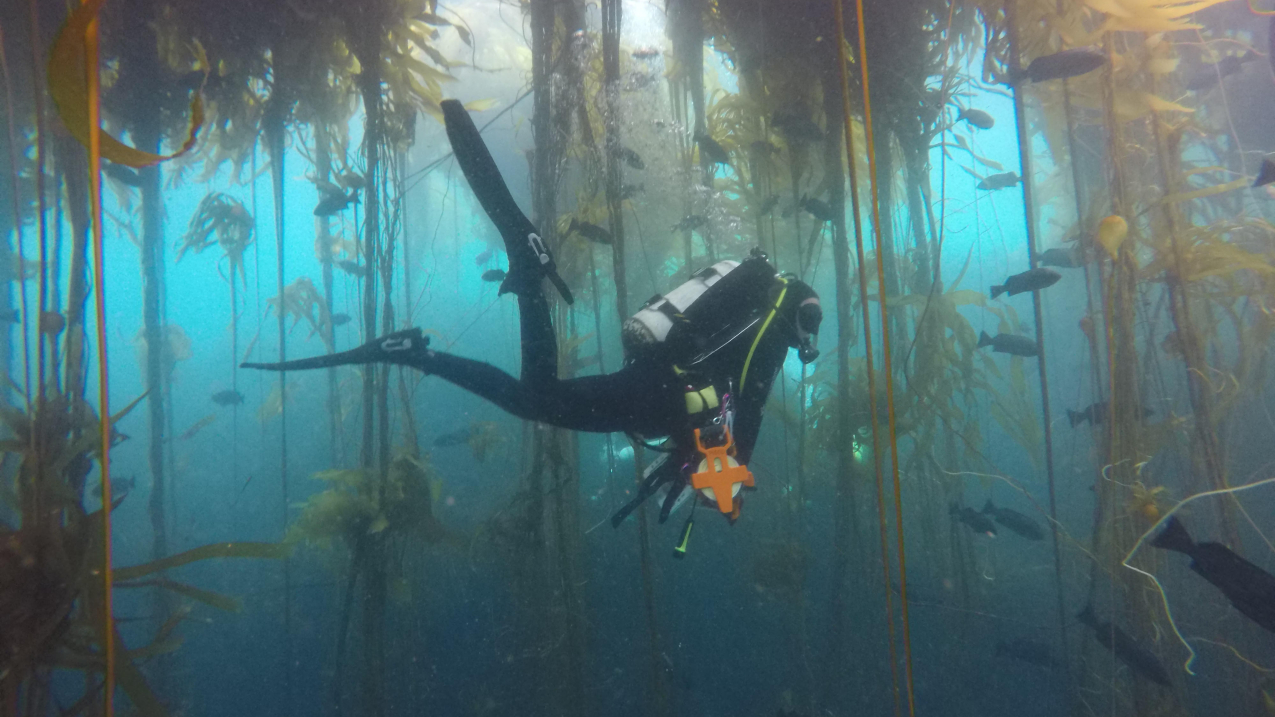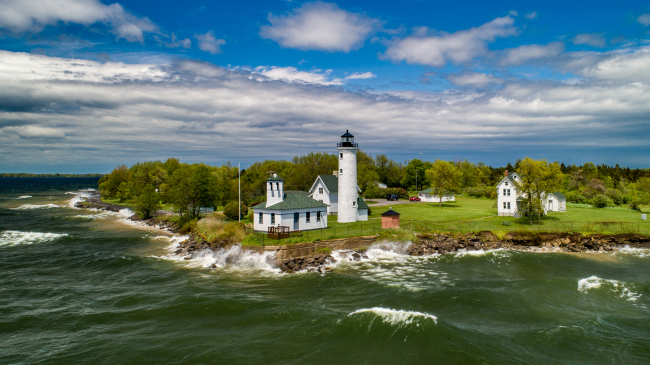
A diver swims through a kelp forest in Monterey Bay National Marine Sanctuary. NOAA is investing $7 million from the Inflation Reduction Act to build a new office space, within a new science building planned for construction at California State University, Monterey Bay (CSUMB). The new facility would enhance collaboration with CSUMB in its applied programs like seafloor mapping, kelp forest restoration, agriculture businesses, and sustainable tourism. (Image credit: NOAA)




